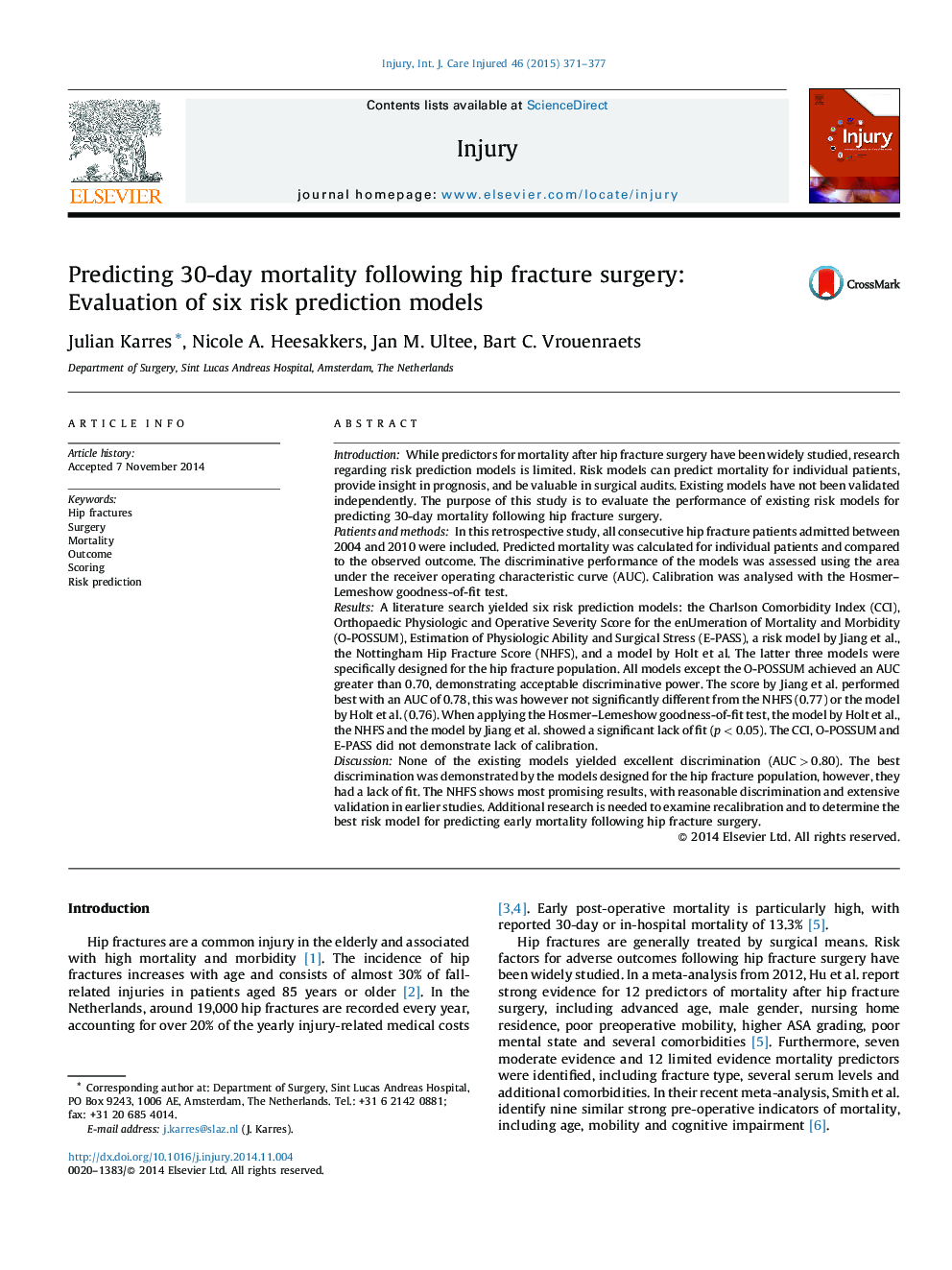| کد مقاله | کد نشریه | سال انتشار | مقاله انگلیسی | نسخه تمام متن |
|---|---|---|---|---|
| 6083248 | 1205988 | 2015 | 7 صفحه PDF | دانلود رایگان |
IntroductionWhile predictors for mortality after hip fracture surgery have been widely studied, research regarding risk prediction models is limited. Risk models can predict mortality for individual patients, provide insight in prognosis, and be valuable in surgical audits. Existing models have not been validated independently. The purpose of this study is to evaluate the performance of existing risk models for predicting 30-day mortality following hip fracture surgery.Patients and methodsIn this retrospective study, all consecutive hip fracture patients admitted between 2004 and 2010 were included. Predicted mortality was calculated for individual patients and compared to the observed outcome. The discriminative performance of the models was assessed using the area under the receiver operating characteristic curve (AUC). Calibration was analysed with the Hosmer-Lemeshow goodness-of-fit test.ResultsA literature search yielded six risk prediction models: the Charlson Comorbidity Index (CCI), Orthopaedic Physiologic and Operative Severity Score for the enUmeration of Mortality and Morbidity (O-POSSUM), Estimation of Physiologic Ability and Surgical Stress (E-PASS), a risk model by Jiang et al., the Nottingham Hip Fracture Score (NHFS), and a model by Holt et al. The latter three models were specifically designed for the hip fracture population. All models except the O-POSSUM achieved an AUC greater than 0.70, demonstrating acceptable discriminative power. The score by Jiang et al. performed best with an AUC of 0.78, this was however not significantly different from the NHFS (0.77) or the model by Holt et al. (0.76). When applying the Hosmer-Lemeshow goodness-of-fit test, the model by Holt et al., the NHFS and the model by Jiang et al. showed a significant lack of fit (p < 0.05). The CCI, O-POSSUM and E-PASS did not demonstrate lack of calibration.DiscussionNone of the existing models yielded excellent discrimination (AUC > 0.80). The best discrimination was demonstrated by the models designed for the hip fracture population, however, they had a lack of fit. The NHFS shows most promising results, with reasonable discrimination and extensive validation in earlier studies. Additional research is needed to examine recalibration and to determine the best risk model for predicting early mortality following hip fracture surgery.
Journal: Injury - Volume 46, Issue 2, February 2015, Pages 371-377
